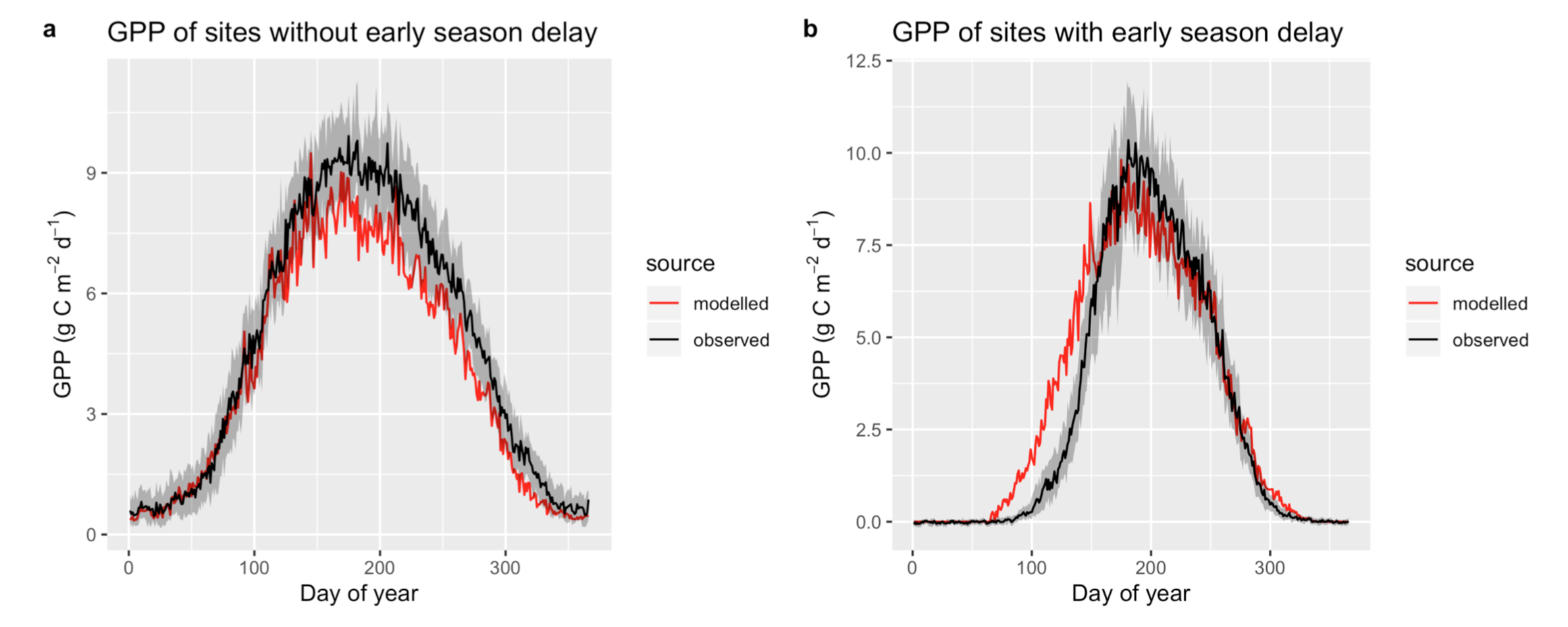Cold acclimation effects on photosynthesis

Ecosystem-level photosynthesis (gross primary production: GPP) can be predicted using remotely sensed information on vegetation cover, local measurements of solar radiation and relatively simple models for the efficiency of photosynthesis (Ryu et al., 2019; Stocker et al., 2019). But one aspect of model-data mismatch stands out: The early-season increase in GPP is typically simulated to be around a month too early at some sites but not at others (Fig. 1). It will be your challenge to find out why and how to resolve this model deficiency.

Fig. 1 Mean seasonal cycle of GPP aggregated for 14 sites where without early season overestimation of modelled GPP (a) and 13 sites with an apparent overestimation of early season modelled GPP (b).
A hypothesis that may explain this phenomenon is that the photosynthetic apparatus is acclimated to the risk of frost damage in early spring, caused by conditions of low temperature and simultaneously high solar radiation. To prevent excessive light harvesting, photoprotective mechanisms are deployed by plants and lead to reduced photosynthetic carbon assimilation, and hence GPP. At locations with relatively mild winters and limited risk of frost, photoprotection may be less prevalent and photosynthesis rates are high already in the early season.
We are using ecosystem flux data in combination with our photosynthesis model to understand and resolve its ominous early season GPP bias at some sites in some years.
This research is led by Dr. Yunpeng Luo, a postdoc in my group and co-supervised by Prof. Arthur Gessler, WSL Birmensdorf.